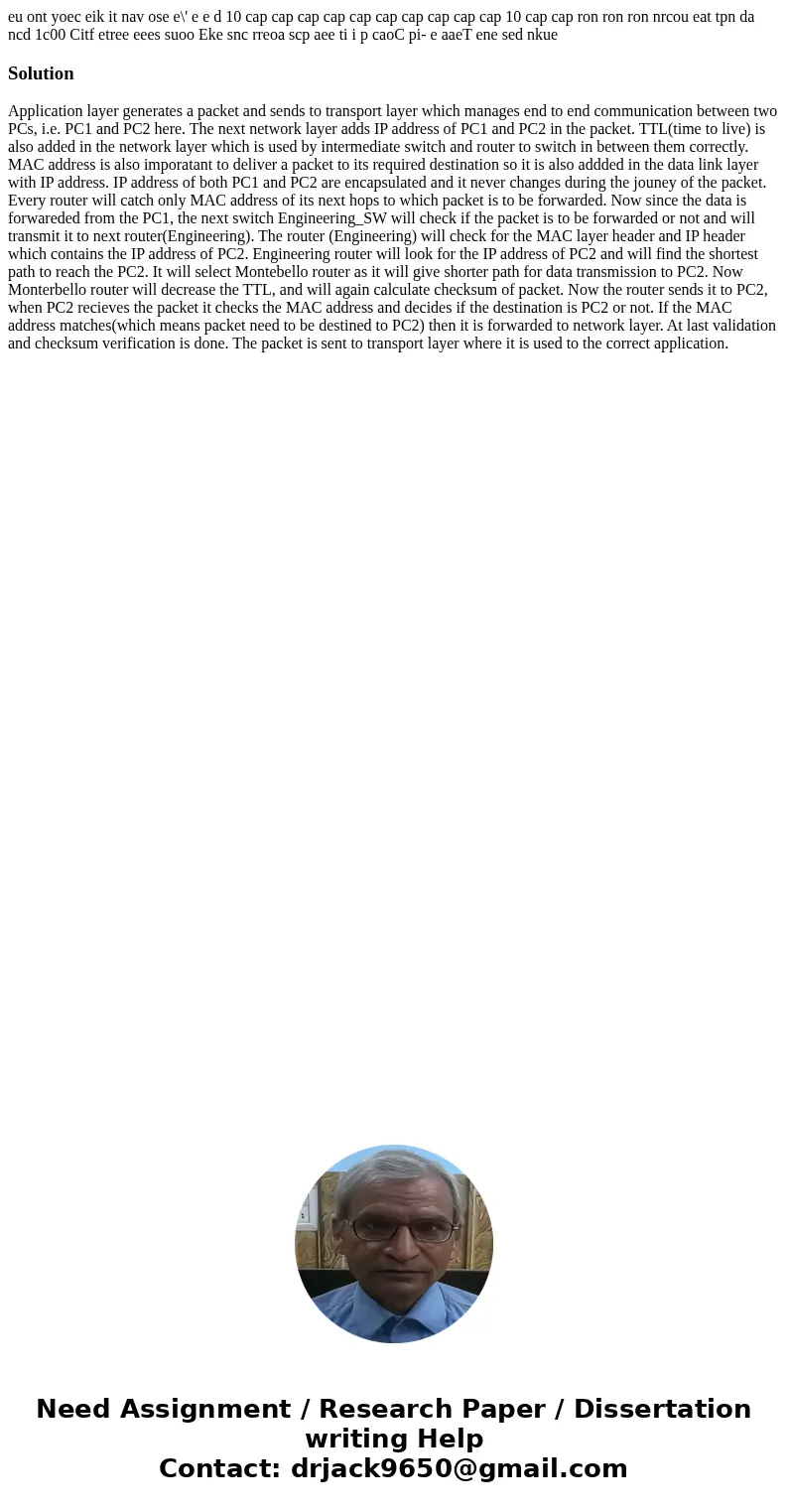eu ont yoec eik it nav ose e e e d 10 cap cap cap cap cap ca
eu ont yoec eik it nav ose e\' e e d 10 cap cap cap cap cap cap cap cap cap cap 10 cap cap ron ron ron nrcou eat tpn da ncd 1c00 Citf etree eees suoo Eke snc rreoa scp aee ti i p caoC pi- e aaeT ene sed nkue 
Solution
Application layer generates a packet and sends to transport layer which manages end to end communication between two PCs, i.e. PC1 and PC2 here. The next network layer adds IP address of PC1 and PC2 in the packet. TTL(time to live) is also added in the network layer which is used by intermediate switch and router to switch in between them correctly. MAC address is also imporatant to deliver a packet to its required destination so it is also addded in the data link layer with IP address. IP address of both PC1 and PC2 are encapsulated and it never changes during the jouney of the packet. Every router will catch only MAC address of its next hops to which packet is to be forwarded. Now since the data is forwareded from the PC1, the next switch Engineering_SW will check if the packet is to be forwarded or not and will transmit it to next router(Engineering). The router (Engineering) will check for the MAC layer header and IP header which contains the IP address of PC2. Engineering router will look for the IP address of PC2 and will find the shortest path to reach the PC2. It will select Montebello router as it will give shorter path for data transmission to PC2. Now Monterbello router will decrease the TTL, and will again calculate checksum of packet. Now the router sends it to PC2, when PC2 recieves the packet it checks the MAC address and decides if the destination is PC2 or not. If the MAC address matches(which means packet need to be destined to PC2) then it is forwarded to network layer. At last validation and checksum verification is done. The packet is sent to transport layer where it is used to the correct application.
 Homework Sourse
Homework Sourse